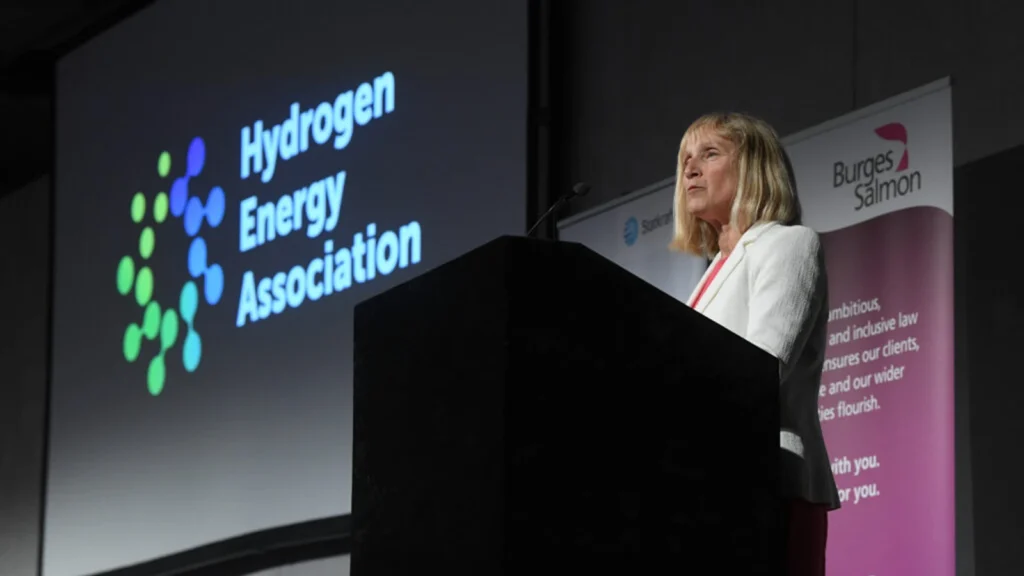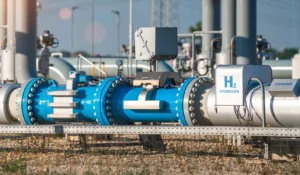Hydrogen Energy Association publishes new action plan to stimulate UK hydrogen demand

The Hydrogen Energy Association (HEA) has published a new action plan calling for government intervention to accelerate demand for low-carbon hydrogen across the UK economy.
The report, released today (23 April 2025), sets out a series of recommendations designed to support the country’s 10GW hydrogen production target by creating stronger demand in transport, industry, and power generation.
Dr Emma Guthrie, Chief Executive of the HEA, said the UK has made “positive progress” on hydrogen production and storage, but that attention must now shift to demand.
“Hydrogen presents a major economic and energy opportunity for the UK,” she said. “It can strengthen system resilience and security, and potentially unlock billions in private investment by 2030.”
The HEA’s Building Hydrogen Demand Action Plan outlines 16 specific measures, ranging from carbon pricing reform to the creation of inland hydrogen hubs.
The association argues that a more balanced approach is needed if the UK is to fully realise the benefits of a low-carbon hydrogen economy.
Focus on demand
The HEA says that while more than 100 hydrogen projects have reached development or funding stages in the UK, fewer than 30 currently involve actual use of hydrogen. It warns that the existing focus on production risks outpacing uptake.
Among the report’s core proposals are reforms to the UK carbon pricing system, which currently sits at around £37 per tonne of CO₂.
The HEA argues this level is “failing to stimulate zero carbon solutions” and makes it difficult for businesses to justify switching from fossil fuels to hydrogen.
Other recommendations include:
- Introducing mandates and emissions targets for hydrogen uptake in industry and transport.
- Allowing Risk-Taking Intermediaries (RTIs) under Low Carbon Hydrogen Agreements to act as intermediaries between producers and users. The report suggests that GB Energy could fulfil this role.
- Developing inland hydrogen hubs to serve non-clustered users and support local production and demand.
- Accelerating work on hydrogen blending into the gas grid, to act as a short-term offtaker of last resort without displacing higher-value uses.
Sector-by-sector recommendations
The HEA calls for clearer policy support across all major hydrogen use sectors:
Industry and power
The report estimates that up to 50TWh of industrial demand could be met by hydrogen by 2035, particularly in sectors such as steel, glass, and cement. However, uptake remains limited outside the major industrial clusters.
To address this, the HEA recommends government-backed loan schemes to help smaller companies with the upfront capital costs of switching to hydrogen, and calls for the removal of Climate Change Levy charges on electricity used for electrolysis. A consultation on this policy is currently underway.
The HEA also supports the development of a business model for hydrogen-to-power applications, which it says could reduce electricity system costs and support grid flexibility.
Transport
Hydrogen is identified as a complementary solution to battery-electric vehicles, especially in areas where range, refuelling time or grid capacity are limiting factors.
The HEA wants the Department for Transport to develop a dedicated Hydrogen for Transport Strategy, covering both fuel cell and hydrogen internal combustion technologies.
It also recommends changes to the Renewable Transport Fuel Obligation (RTFO), which it says currently offers limited support for hydrogen and does not reflect the full cost of deployment.
Hydrogen is considered particularly well suited to buses, HGVs, light commercial vehicles, rail, maritime, and off-road machinery, with the report pointing to international targets and vehicle trials in Germany, the US and Asia as evidence of growing global momentum.
Next steps
The action plan is framed as a practical strategy to reduce early-stage risk and stimulate investment, rather than a request for indefinite government subsidy.
The HEA argues that targeted reforms now could help deliver up to 12,000 jobs and £11 billion in private investment by 2030.
It concludes by calling for closer collaboration between industry and government to turn recommendations into policy.
“Addressing these key areas of hydrogen demand will help the UK hydrogen economy to accelerate at the pace needed,” the report states, “not only to deliver our net zero objectives, but to realise long-term economic benefits.”
The full report is available via the Hydrogen Energy Association website.












